Abstract
1. We examined the functional morphology of the intra-ocular muscles of the grey squirrel using pharmacological and histological methods. Using sympathomimetic (phenylephrine) and parasympathomimetic (carbachol) agents, administered by transcorneal iontophoresis, the response of the iris sphincter and dilator muscles and the ciliary muscle were recorded. Measurement techniques included both streak retinoscopy and coincidence optometry for measurement of ocular refraction and high resolution ultrasonography to monitor changes in the intra-ocular component dimensions. 2. The grey squirrel was found not to possess a functional accommodative system. No change in ocular refraction or intra-ocular dimensions could be induced with 40% carbachol. Marked changes in pupil diameter occurred with topical application of both phenylephrine (dilation) and carbachol (constriction). Histological findings were in agreement with pharmacological findings in showing well developed iris sphincter and dilator muscles but only a poorly developed ciliary muscle. 3. Calculation of the depth of focus of the grey squirrel eye reveals that this could be sufficient to account for the behavioural observations of near viewing habits. 4. We then determined whether we could induce axial elongation of the vitreous chamber and a consequent myopia by monocular deprivation (MD) of pattern vision. 5. Monocular deprivation of pattern vision produced a significant experimental myopia due to axial elongation of the vitreous chamber in the deprived eye. 6. The results demonstrate that a functional accommodative system is not necessary to induce experimental myopia in the grey squirrel eye.
Full text
PDF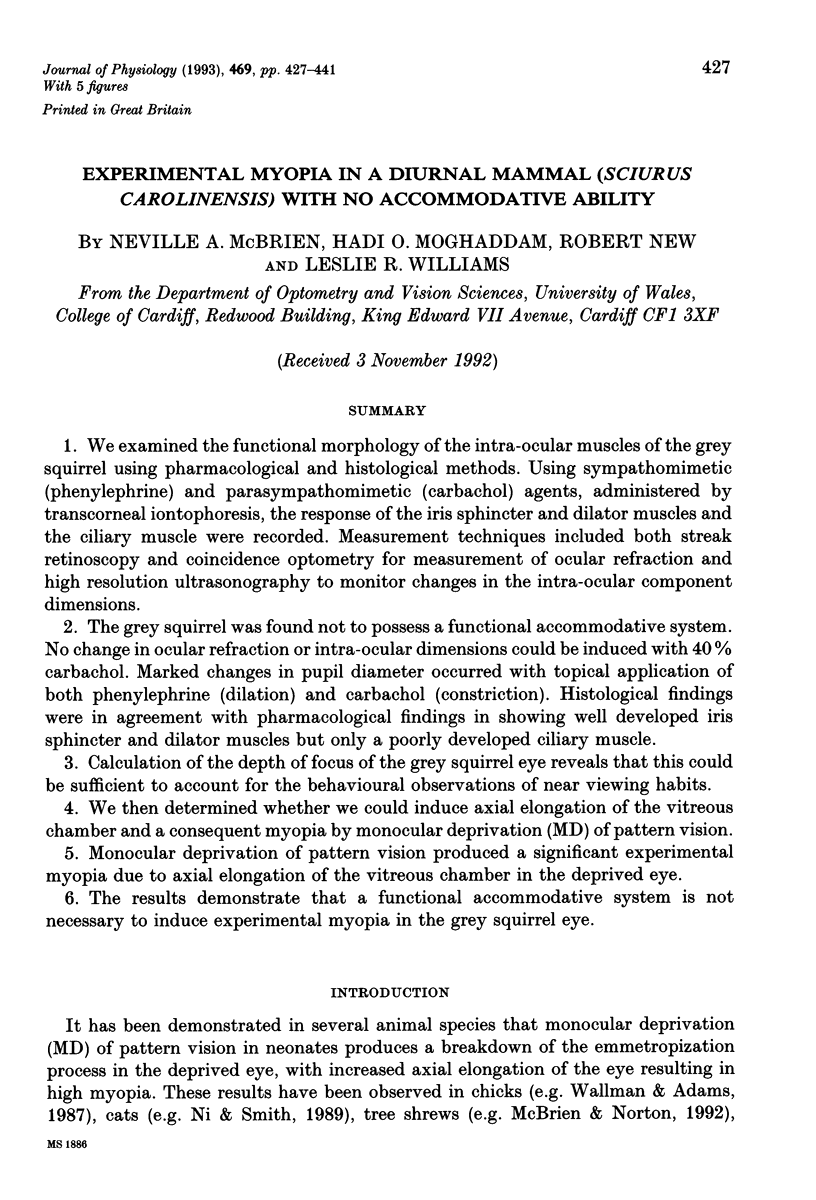
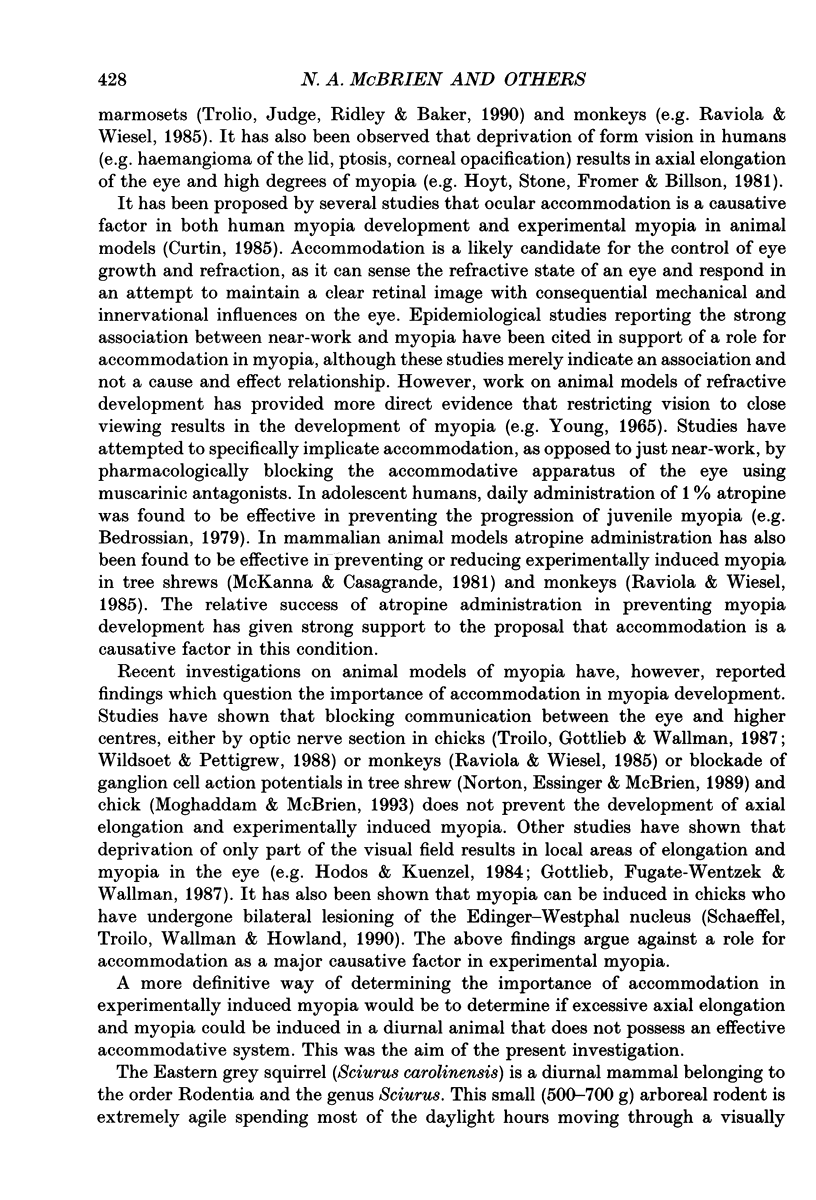
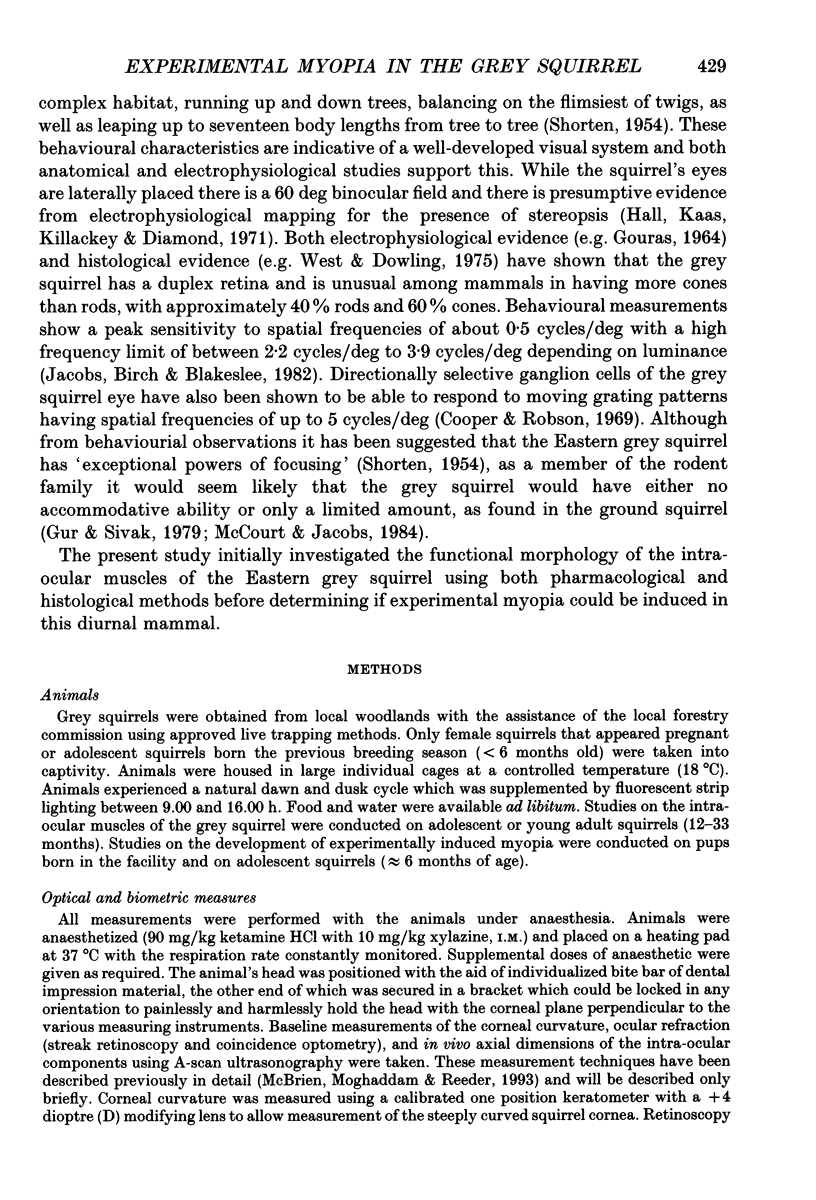
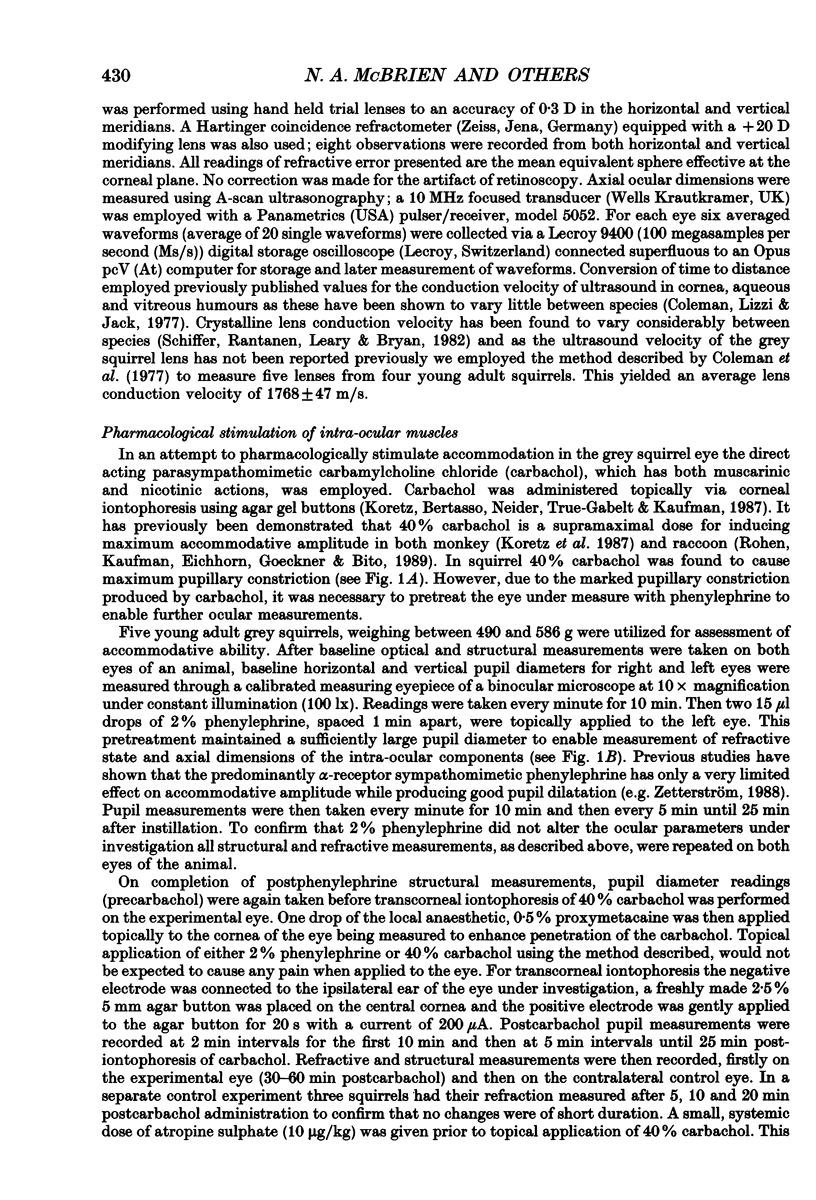
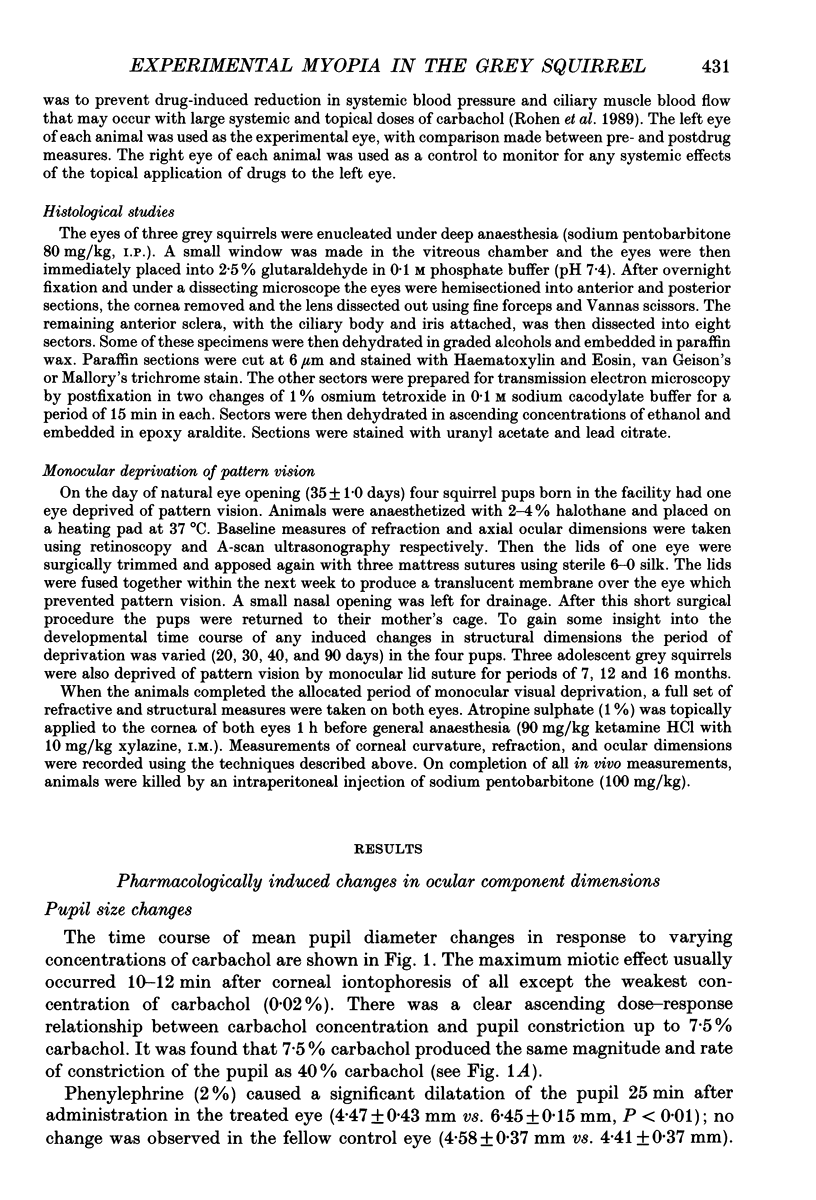
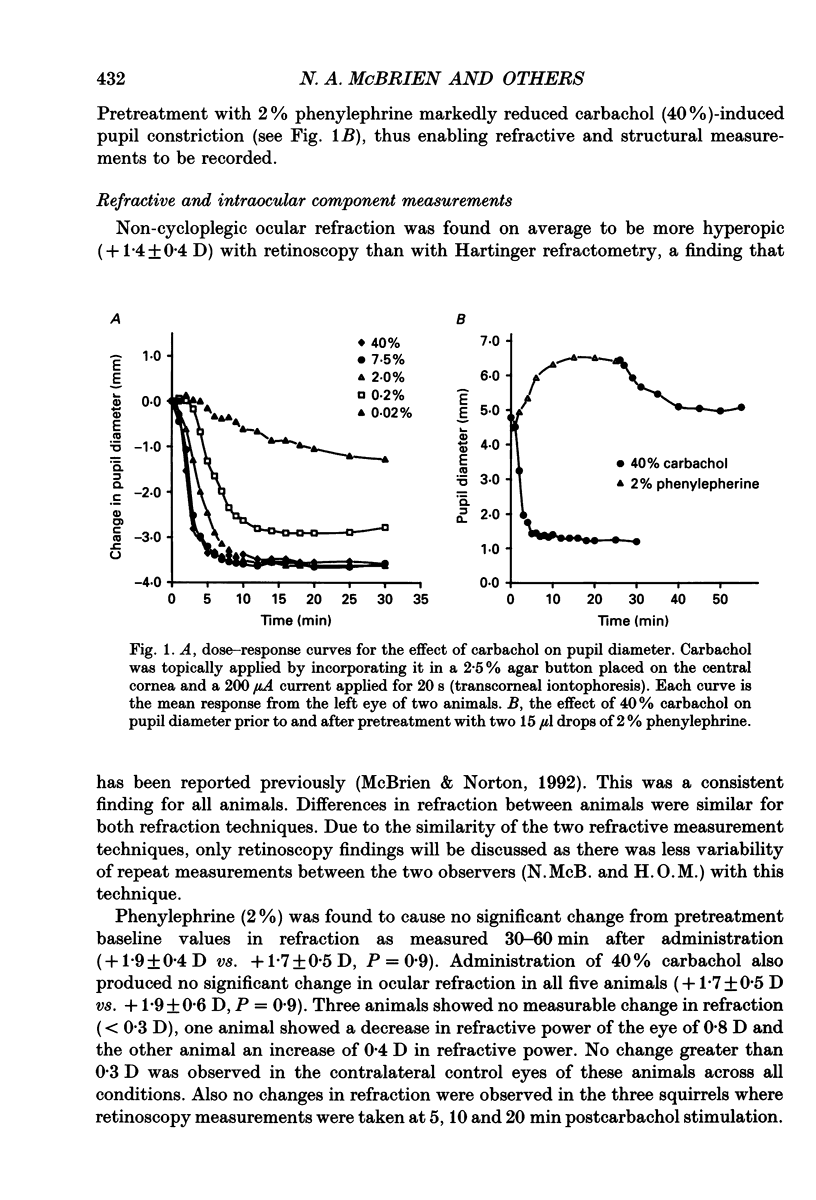
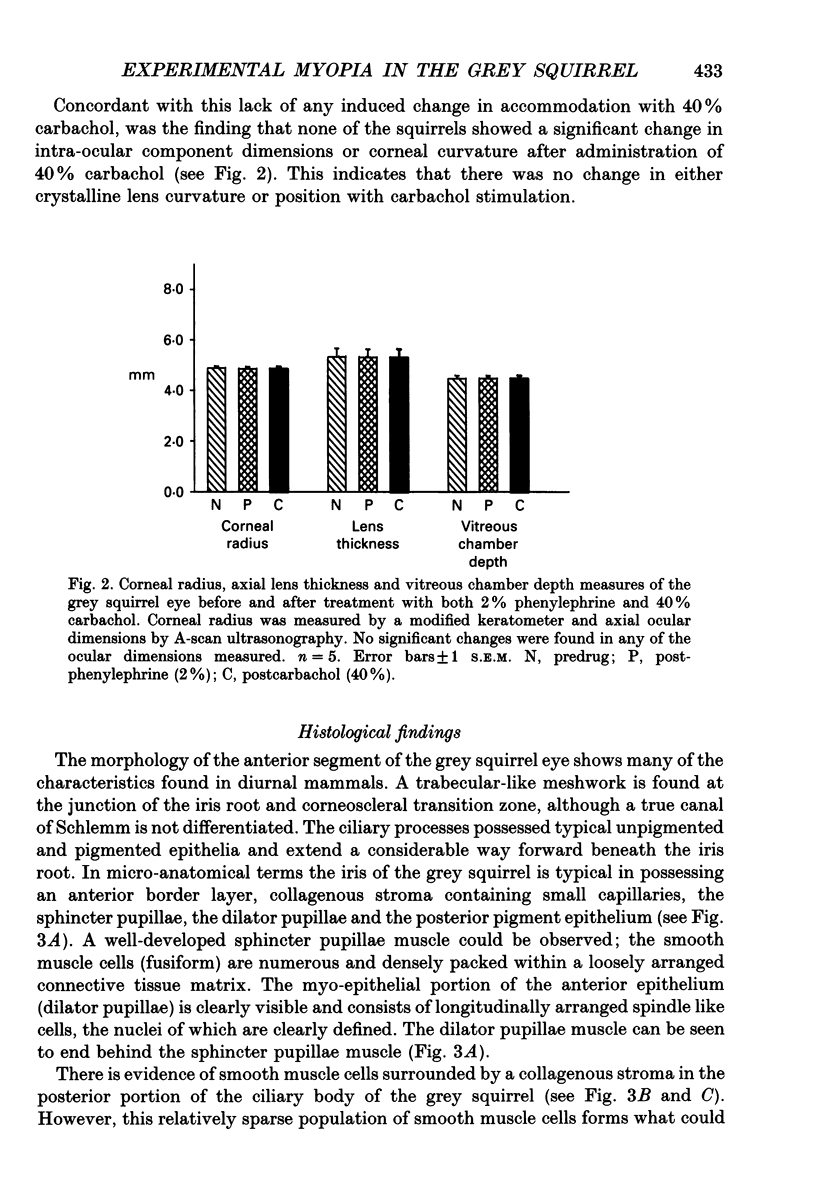
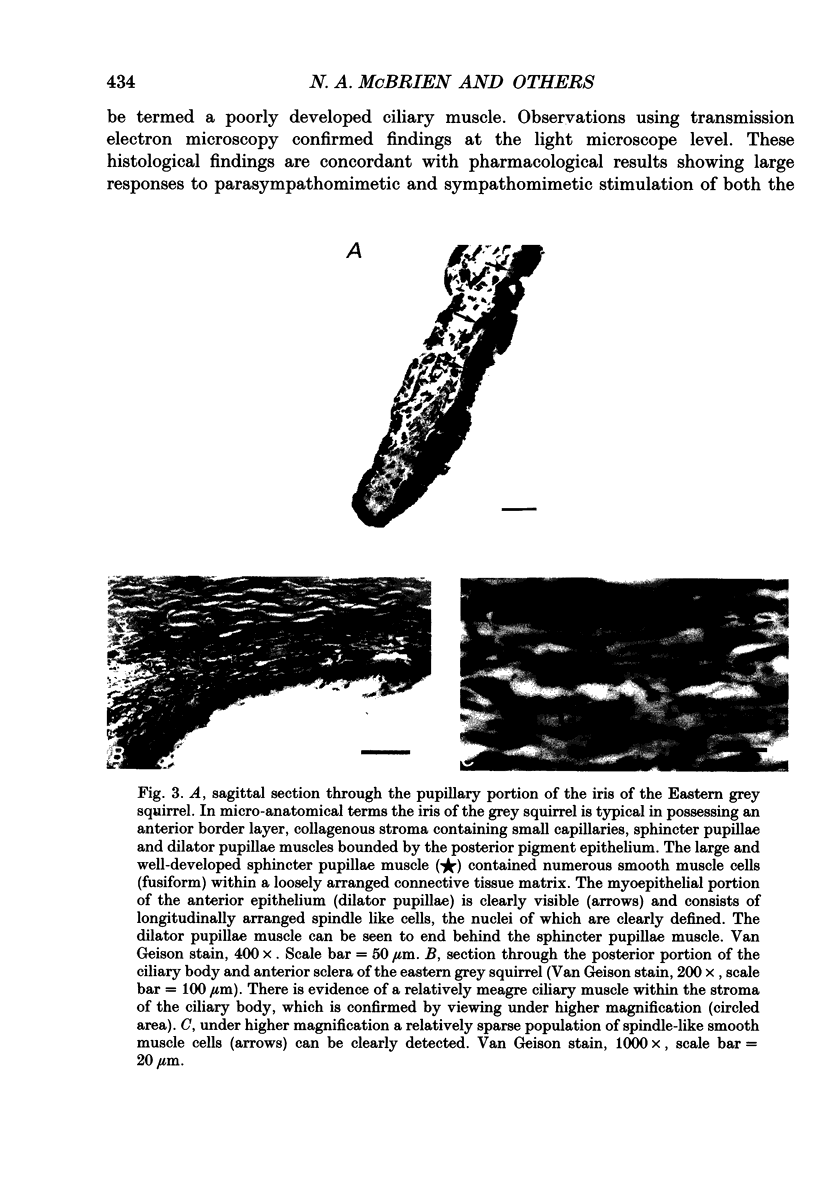
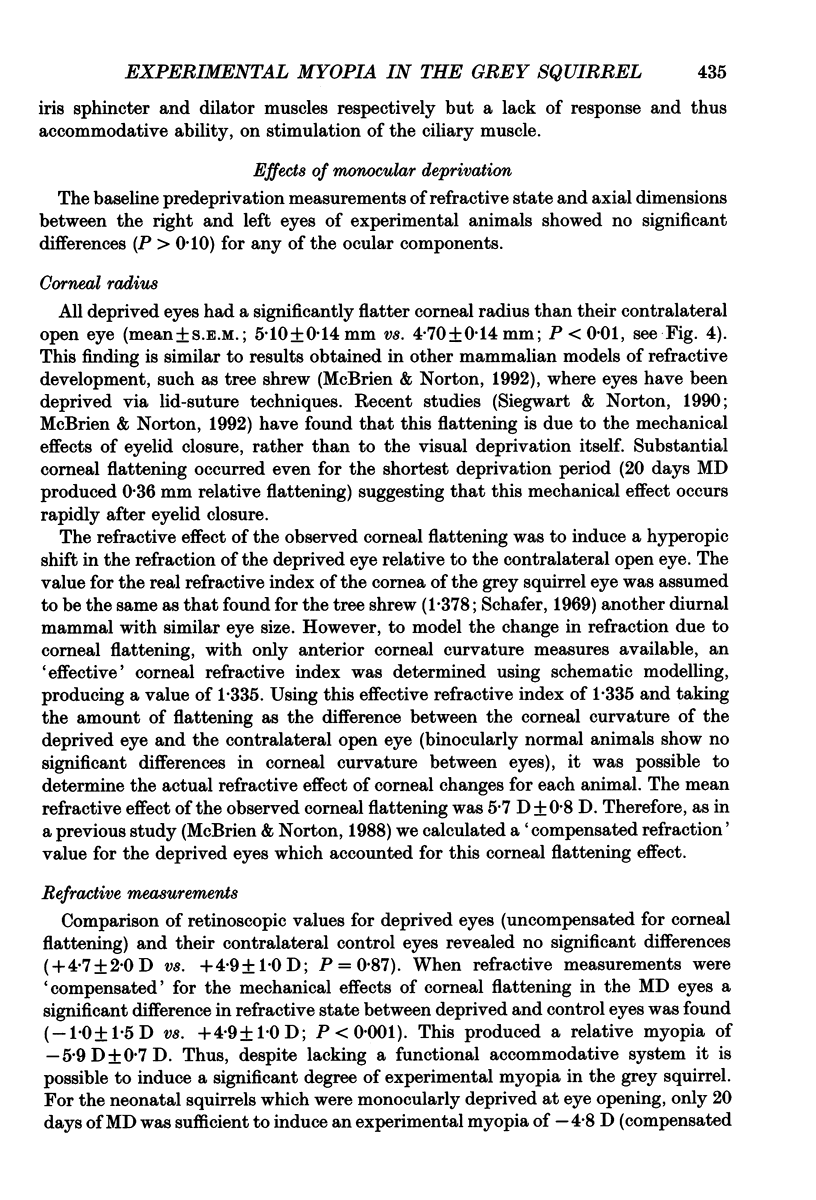
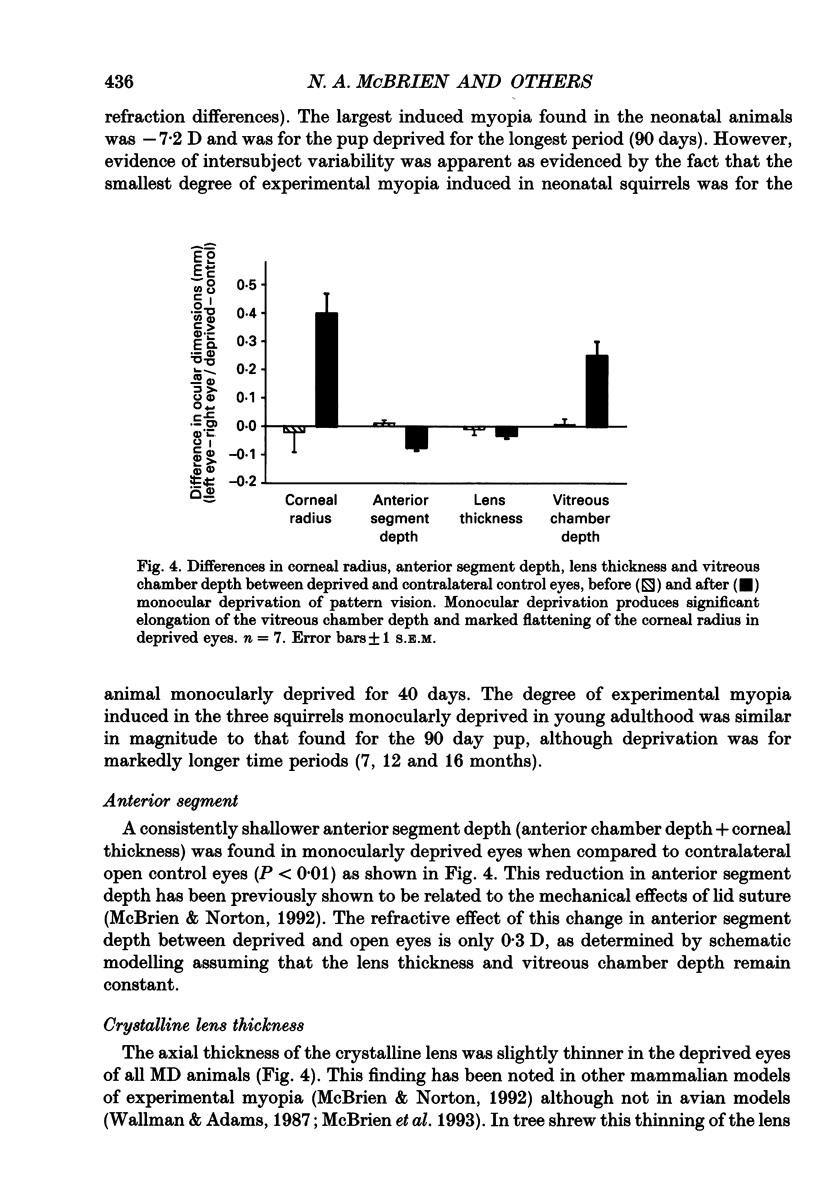
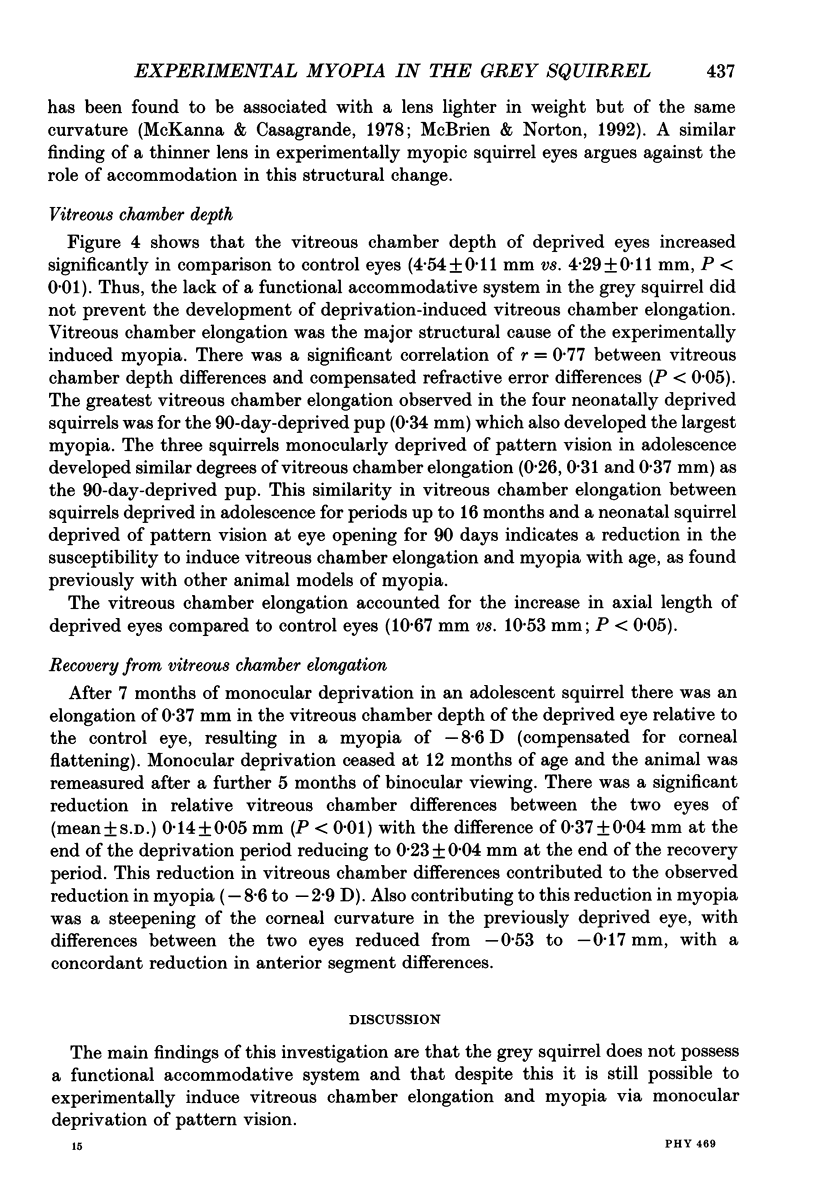
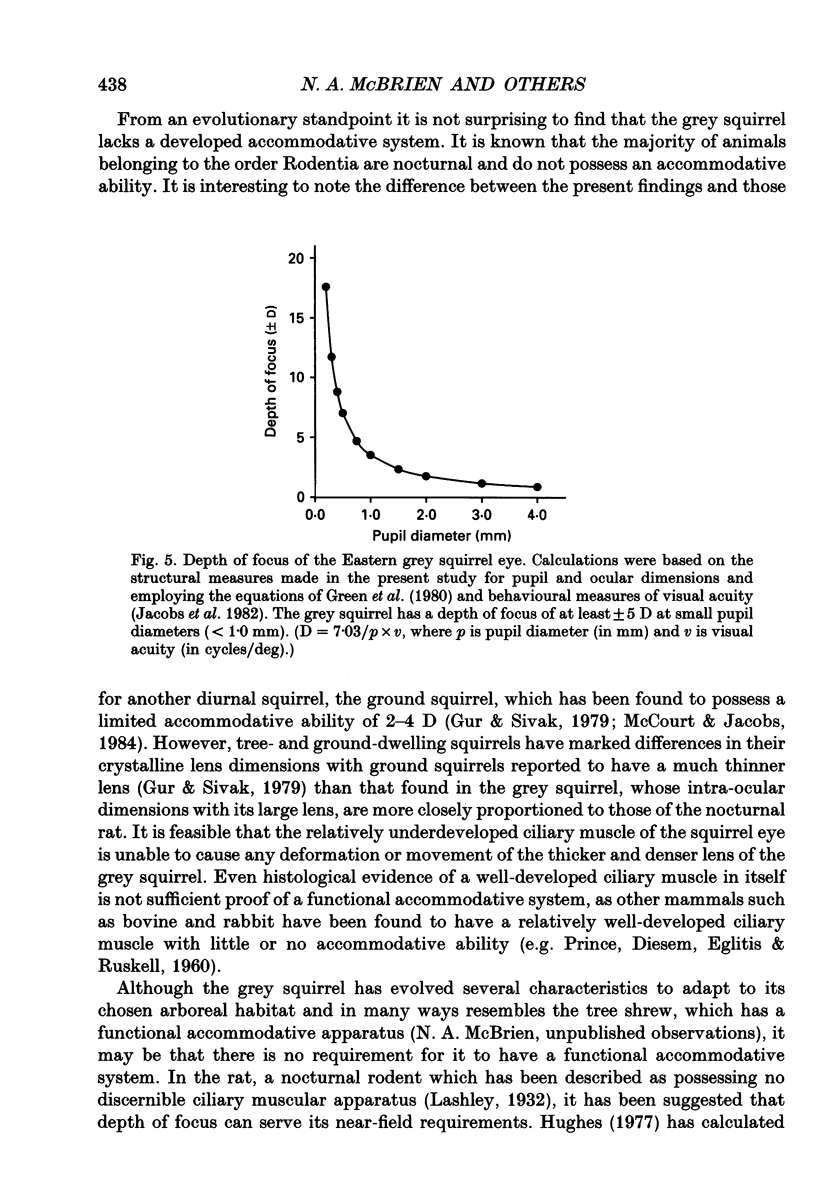
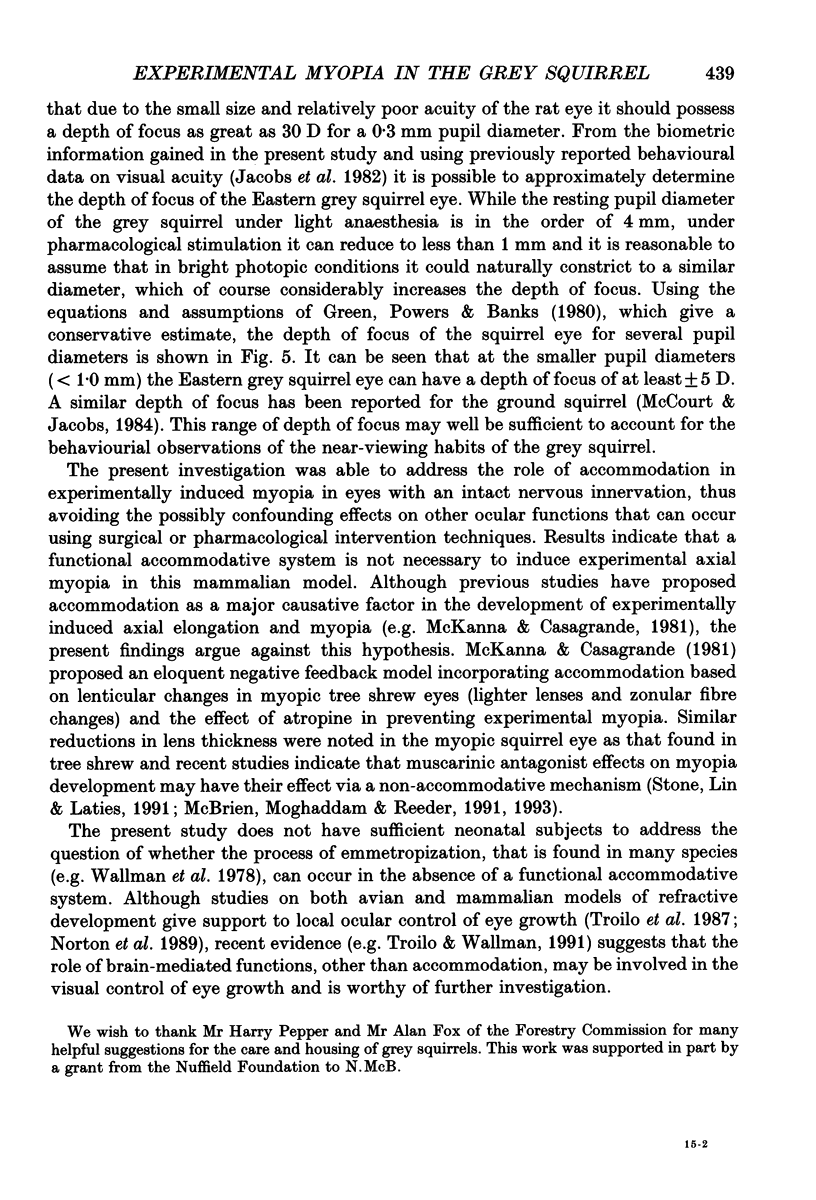
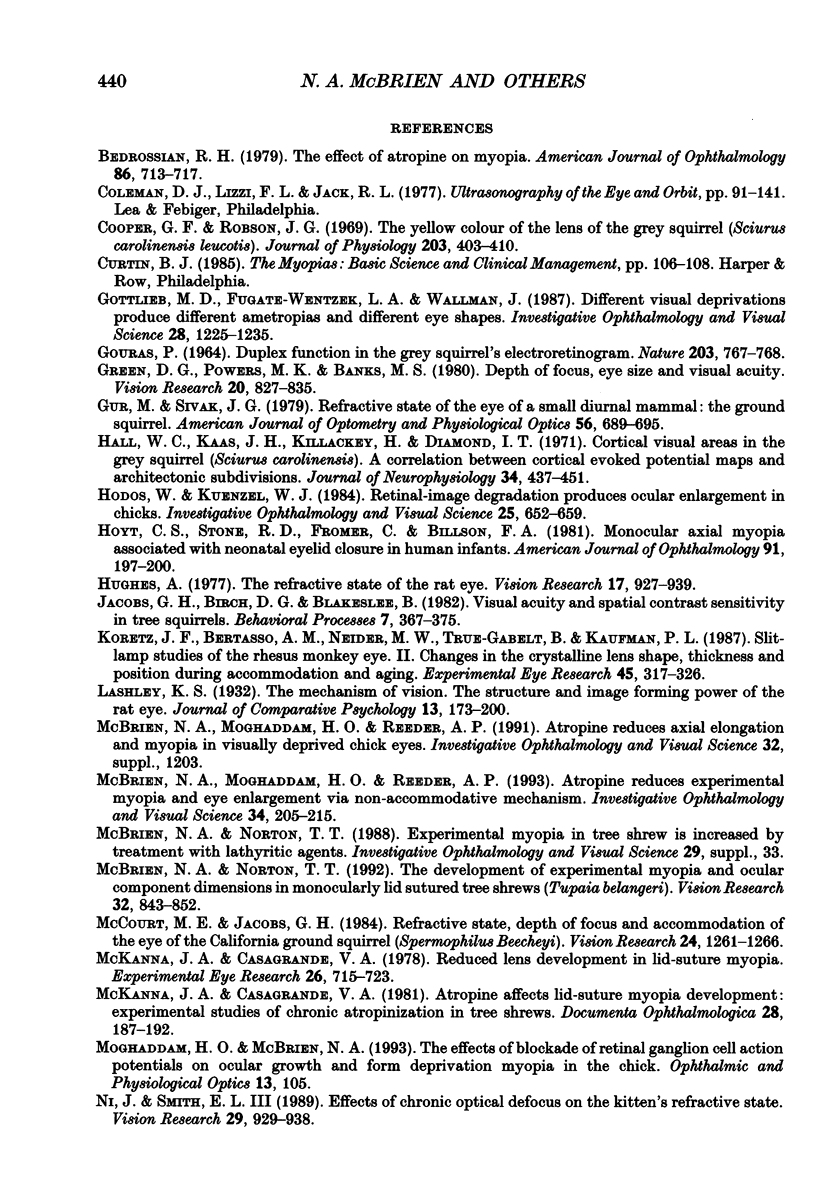
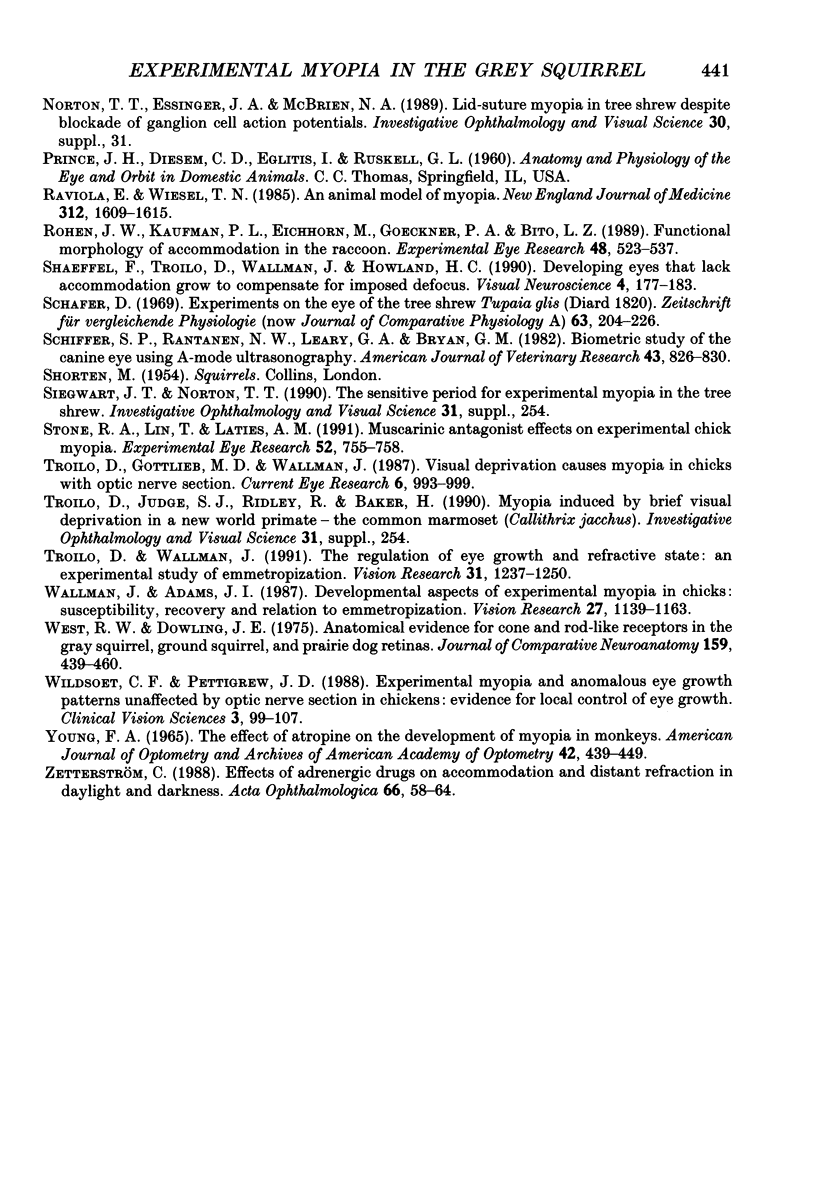
Images in this article
Selected References
These references are in PubMed. This may not be the complete list of references from this article.
- Bedrossian R. H. The effect of atropine on myopia. Ophthalmology. 1979 May;86(5):713–719. doi: 10.1016/s0161-6420(79)35455-0. [DOI] [PubMed] [Google Scholar]
- Cooper G. F., Robson J. G. The yellow colour of the lens of the grey squirrel (sciurus carolinensis leucotis). J Physiol. 1969 Aug;203(2):403–410. doi: 10.1113/jphysiol.1969.sp008870. [DOI] [PMC free article] [PubMed] [Google Scholar]
- GOURAS P. DUPLEX FUNCTION IN THE GREY SQUIRREL'S ELECTRORETINOGRAM. Nature. 1964 Aug 15;203:767–768. doi: 10.1038/203767a0. [DOI] [PubMed] [Google Scholar]
- Gottlieb M. D., Fugate-Wentzek L. A., Wallman J. Different visual deprivations produce different ametropias and different eye shapes. Invest Ophthalmol Vis Sci. 1987 Aug;28(8):1225–1235. [PubMed] [Google Scholar]
- Green D. G., Powers M. K., Banks M. S. Depth of focus, eye size and visual acuity. Vision Res. 1980;20(10):827–835. doi: 10.1016/0042-6989(80)90063-2. [DOI] [PubMed] [Google Scholar]
- Gur M., Sivak J. G. Refractive state of the eye of a small diurnal mammal: the ground squirrel. Am J Optom Physiol Opt. 1979 Nov;56(11):689–695. doi: 10.1097/00006324-197911000-00004. [DOI] [PubMed] [Google Scholar]
- Hall W. C., Kaas J. H., Killackey H., Diamond I. T. Cortical visual areas in the grey squirrel (Sciurus carolinesis): a correlation between cortical evoked potential maps and architectonic subdivisions. J Neurophysiol. 1971 May;34(3):437–452. doi: 10.1152/jn.1971.34.3.437. [DOI] [PubMed] [Google Scholar]
- Hodos W., Kuenzel W. J. Retinal-image degradation produces ocular enlargement in chicks. Invest Ophthalmol Vis Sci. 1984 Jun;25(6):652–659. [PubMed] [Google Scholar]
- Hoyt C. S., Stone R. D., Fromer C., Billson F. A. Monocular axial myopia associated with neonatal eyelid closure in human infants. Am J Ophthalmol. 1981 Feb;91(2):197–200. doi: 10.1016/0002-9394(81)90173-2. [DOI] [PubMed] [Google Scholar]
- Hughes A. The refractive state of the rat eye. Vision Res. 1977;17(8):927–939. doi: 10.1016/0042-6989(77)90068-2. [DOI] [PubMed] [Google Scholar]
- Koretz J. F., Bertasso A. M., Neider M. W., True-Gabelt B. A., Kaufman P. L. Slit-lamp studies of the rhesus monkey eye: II. Changes in crystalline lens shape, thickness and position during accommodation and aging. Exp Eye Res. 1987 Aug;45(2):317–326. doi: 10.1016/s0014-4835(87)80153-7. [DOI] [PubMed] [Google Scholar]
- McBrien N. A., Moghaddam H. O., Reeder A. P. Atropine reduces experimental myopia and eye enlargement via a nonaccommodative mechanism. Invest Ophthalmol Vis Sci. 1993 Jan;34(1):205–215. [PubMed] [Google Scholar]
- McBrien N. A., Norton T. T. The development of experimental myopia and ocular component dimensions in monocularly lid-sutured tree shrews (Tupaia belangeri) Vision Res. 1992 May;32(5):843–852. doi: 10.1016/0042-6989(92)90027-g. [DOI] [PubMed] [Google Scholar]
- McCourt M. E., Jacobs G. H. Refractive state, depth of focus and accommodation of the eye of the California ground squirrel (Spermophilus beecheyi). Vision Res. 1984;24(10):1261–1266. doi: 10.1016/0042-6989(84)90180-9. [DOI] [PubMed] [Google Scholar]
- McKanna J. A., Casagrande V. A. Reduced lens development in lid-suture myopia. Exp Eye Res. 1978 Jun;26(6):715–723. doi: 10.1016/0014-4835(78)90106-9. [DOI] [PubMed] [Google Scholar]
- Ni J., Smith E. L., 3rd Effects of chronic optical defocus on the kitten's refractive status. Vision Res. 1989;29(8):929–938. doi: 10.1016/0042-6989(89)90107-7. [DOI] [PubMed] [Google Scholar]
- Raviola E., Wiesel T. N. An animal model of myopia. N Engl J Med. 1985 Jun 20;312(25):1609–1615. doi: 10.1056/NEJM198506203122505. [DOI] [PubMed] [Google Scholar]
- Rohen J. W., Kaufman P. L., Eichhorn M., Goeckner P. A., Bito L. Z. Functional morphology of accommodation in the raccoon. Exp Eye Res. 1989 Apr;48(4):523–527. doi: 10.1016/0014-4835(89)90035-3. [DOI] [PubMed] [Google Scholar]
- Schaeffel F., Troilo D., Wallman J., Howland H. C. Developing eyes that lack accommodation grow to compensate for imposed defocus. Vis Neurosci. 1990 Feb;4(2):177–183. doi: 10.1017/s0952523800002327. [DOI] [PubMed] [Google Scholar]
- Schiffer S. P., Rantanen N. W., Leary G. A., Bryan G. M. Biometric study of the canine eye, using A-mode ultrasonography. Am J Vet Res. 1982 May;43(5):826–830. [PubMed] [Google Scholar]
- Stone R. A., Lin T., Laties A. M. Muscarinic antagonist effects on experimental chick myopia. Exp Eye Res. 1991 Jun;52(6):755–758. doi: 10.1016/0014-4835(91)90027-c. [DOI] [PubMed] [Google Scholar]
- Troilo D., Gottlieb M. D., Wallman J. Visual deprivation causes myopia in chicks with optic nerve section. Curr Eye Res. 1987 Aug;6(8):993–999. doi: 10.3109/02713688709034870. [DOI] [PubMed] [Google Scholar]
- Troilo D., Wallman J. The regulation of eye growth and refractive state: an experimental study of emmetropization. Vision Res. 1991;31(7-8):1237–1250. doi: 10.1016/0042-6989(91)90048-a. [DOI] [PubMed] [Google Scholar]
- Wallman J., Adams J. I. Developmental aspects of experimental myopia in chicks: susceptibility, recovery and relation to emmetropization. Vision Res. 1987;27(7):1139–1163. doi: 10.1016/0042-6989(87)90027-7. [DOI] [PubMed] [Google Scholar]
- West R. W., Dowling J. E. Anatomical evidence for cone and rod-like receptors in the gray squirrel, ground squirrel, and prairie dog retinas. J Comp Neurol. 1975 Feb 15;159(4):439–460. doi: 10.1002/cne.901590402. [DOI] [PubMed] [Google Scholar]
- YOUNG F. A. THE EFFECT OF ATROPINE ON THE DEVELOPMENT OF MYOPIA IN MONKEYS. Am J Optom Arch Am Acad Optom. 1965 Aug;42:439–449. doi: 10.1097/00006324-196508000-00001. [DOI] [PubMed] [Google Scholar]
- Zetterström C. Effects of adrenergic drugs on accommodation and distant refraction in daylight and darkness. A laseroptometric study. Acta Ophthalmol (Copenh) 1988 Feb;66(1):58–64. doi: 10.1111/j.1755-3768.1988.tb08535.x. [DOI] [PubMed] [Google Scholar]



